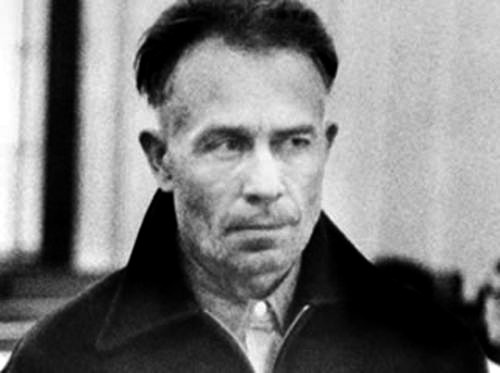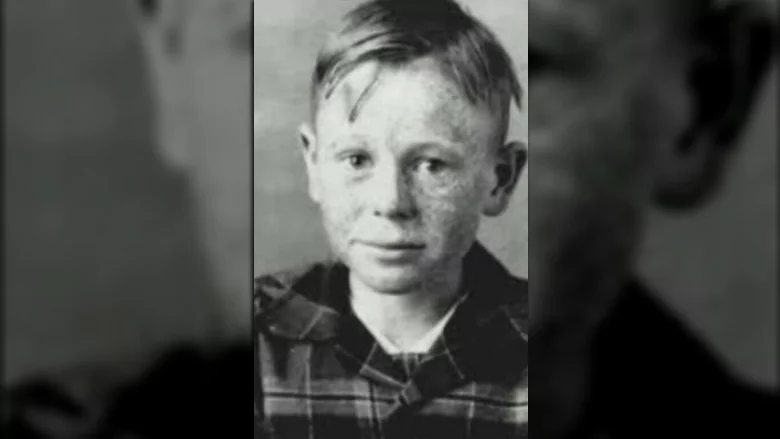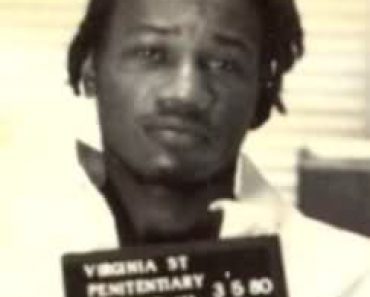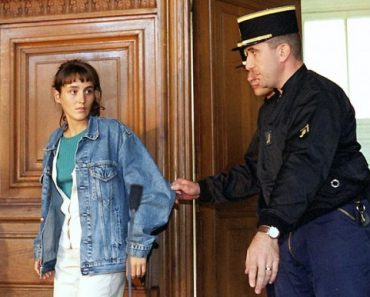Ed Gein | Serial Murderer

Edward Theodore Gein
Born: 08-27-1906
The Body Snatcher
American Serial Murderer
Crime Spree: 1947 – 1957
Died: 07-,26 -1984
Edward Theodore “Ed” Gein was an American murderer and body snatcher. Each of his crimes were committed around his hometown of Plainfield, Wisconsin and garnered widespread notoriety after authorities discovered he had exhumed corpses from local graveyards and fashioned trophies and keepsakes from their bones and skin.
After police found body parts in his house in 1957, Ed Gein confessed to killing two women The first was tavern owner Mary Hogan, who Ed killed in 1954. The second, killed in 1957, was a Plainfield hardware store owner named Bernice Worden. Initially found unfit to stand trial, following confinement in a mental health facility, Ed Gien was tried in 1968 for the murder of Worden and sentenced to life imprisonment, which he would spend in a mental hospital.
With fewer than three murders attributed, Ed Gein does not meet the traditional definition of a serial killer. Regardless, his real-life case influenced the creation of several fictional serial killers, including Leatherface from The Texas Chainsaw Massacre, Norman Bates from Psycho and Buffalo Bill from The Silence of the Lambs.
Who Was Ed Gein

Edward Theodore Gein was born in La Crosse County, Wisconsin. His parents, George and Augusta Gein both natives of Wisconsin, had two sons: Henry George Gein, and his younger brother, Edward Theodore Gein. Despite Augusta’s deep contempt for her husband, the marriage persisted because of the family’s religious belief about divorce. Augusta Gein operated a small grocery store and eventually purchased a farm on the outskirts of the small town of Plainfield, Wisconsin, which then became the Gein family’s permanent home.

Augusta Gein moved to this location to prevent outsiders from influencing her sons. Ed Gein left the premises only to go to school. Besides school, he spent most of his time doing chores on the farm. Augusta Gein, a fervent Lutheran, preached to her boys the innate immorality of the world, the evil of drinking, and the belief that all women (herself excluded) were prostitutes and instruments of the devil. She reserved time every afternoon to read to them from the Bible, usually selecting graphic verses from the Old Testament dealing with death, murder, and divine retribution.
With an effeminate demeanor, Ed Gein became a target for bullies. Classmates and teachers recalled off-putting mannerisms, such as seemingly random laughter, as if he were laughing at his own personal jokes. To make matters worse, his mother scolded him whenever he tried to make friends. Despite his poor social development, he did fairly well in school, particularly in reading.
Ed Gein tried to make his mother happy, but she was rarely pleased with her boys. She often abused them, believing that they were destined to become failures like their father. During their teens and throughout their early adulthood, the boys remained detached from people outside of their farmstead, and so had only each other for company.
Death In The Gein Family
After George Gein died of a heart attack in 1940, the Gein brothers began working at odd jobs to help with expenses. Both brothers were considered reliable and honest by residents of the community. While both worked as handymen, Ed Gein also frequently babysat for neighbors. He enjoyed babysitting, seeming to relate more easily to children than adults. Henry Gein began to reject his mother’s view of the world and worried about his brother Ed’s attachment to her. He spoke ill of her around his brother.
On May 16, 1944, a brush fire burned close to the farm, and the Gein brothers went out to extinguish it. Reportedly, the brothers were separated, and as night fell, Ed Gein lost sight of his brother. When the fire was extinguished, he reported to the police that his brother was missing. When a search party was organized, Ed led them directly to his missing brother, who lay dead on the ground. The police had concerns about the circumstances under which the body was discovered. The ground on which Henry Gein lay was untouched by fire, and he had bruises on his head. Despite this, the police dismissed the possibility of foul play and the county coroner listed asphyxiation as the cause of death. Although some investigators suspected that Ed Gein killed his brother, no charges were filed against him.
After his brother’s death, Ed Gein lived alone with his mother, who died on December 29, 1945, following a series of strokes, at which time Ed “lost his only friend and one true love. And he was now absolutely alone in the world.”
Ed Gein remained on the farm, supporting himself with earnings from odd jobs. He boarded up rooms used by his mother, including the upstairs, downstairs parlor, and living room, leaving them untouched. He lived in a small room next to the kitchen. Ed became interested in reading death-cult magazines and adventure stories.
The Arrest of Ed Gein

On November 16, 1957, Plainfield hardware store owner Bernice Worden disappeared, and police had reason to suspect Ed Gein. Worden’s son had told investigators that Gein had been in the store the evening before the disappearance, saying he would return the following morning for a gallon of anti-freeze. A sales slip for a gallon of anti-freeze was the last receipt written by Worden on the morning she disappeared.
Upon searching Gein’s property, investigators discovered Worden’s decapitated body in a shed, hung upside down by ropes at her wrists, with a crossbar at her ankles. The torso was “dressed out” like that of a deer. She had been shot with a .22-caliber rifle, and the mutilations performed after death.
Searching the house, authorities found:
- Four noses
- Whole human bones and fragments
- Nine masks of human skin
- Bowls made from human skulls
- Ten female heads with the tops sawed off
- Human skin covering several chair seats
- Mary Hogan’s head in a paper bag
- Bernice Worden’s head in a burlap sack
- Nine vulvas in a shoe box
- Skulls on his bedposts
- Organs in the refrigerator
- A pair of lips on a draw string for a window shade
- A belt made from human female nipples
- A lampshade made from the skin from a human face
These artifacts were photographed at the crime lab and then were properly destroyed.
The Confession of Ed Gein
When questioned, Ed Gein told investigators that between 1947 and 1952, he made as many as 40 nocturnal visits to three local graveyards to exhume recently buried bodies while he was in a “daze-like” state. On about 30 of those visits, he said he had come out of the daze while in the cemetery, left the grave in good order, and returned home empty handed.
On the other occasions, he dug up the graves of recently buried middle-aged women he thought resembled his mother and took the bodies home, where he tanned their skins to make his paraphernalia. Ed Gein admitted robbing nine graves, leading investigators to their locations. Because authorities were uncertain as to whether the slight Gein was capable of single-handedly digging up a grave in a single evening, they exhumed two of the graves and found them empty, thus corroborating Gein’s confession.
Shortly after his mother’s death, Ed Gein had decided he wanted a sex change and began to create a “woman suit” so he could pretend to be a female. Gein’s practice of donning the tanned skins of women was described as an “insane transvestite ritual”. Ed denied having sex with the bodies he exhumed, explaining, “They smelled too bad.” During interrogation, Gein also admitted to the shooting death of Mary Hogan, a tavern operator missing since 1954.
A 16-year-old youth, whose parents were friends of Ed Gein, and who attended ball games and movies with Gein, reported that he was aware of the shrunken heads, which Ed had described as relics from the Philippines sent by a cousin who had served in World War II. Upon investigation by the police, these were determined to be human facial skins, carefully peeled from cadavers and used as masks by Ed Gein.
Ed Gein
On November 21, 1957, Ed Gein was arraigned on one count of first degree murder in Waushara County Court, where he entered a plea of not guilty by reason of insanity. Found mentally incompetent and thus unfit to stand trial, Ed was sent to the Central State Hospital for the Criminally Insane, a maximum-security facility in Waupun, Wisconsin, and later transferred to the Mendota State Hospital in Madison, Wisconsin. In 1968, Gein’s doctors determined he was sane enough to stand trial. The trial began on November 14, 1968, lasting one week. He was found guilty of first-degree murder by Judge Robert H. Gollmar, but because he was found to be legally insane, he spent the rest of his life in a mental hospital.
article continued below
WickedWe Recommends:
Edward Gein
America’s Most Bizarre Murderer is the true story of Edward “Ed” Theodore Gein, the Butcher of Plainfield.
Edward Theodore Gein became known as the Butcher of Plainfield and the Plainfield Ghoul. He was a murderer and a grave robber who used his finds to fashioned trophies and keepsakes from their bones and skin. Gein also openly confessed to killing two women.
The author tells the story of this insane Wisconsin murderer who butchered his victims, robbed local graves and committed a variety of psychotic atrocities. (Amazon)
The Death of Ed Gein
On July 26, 1984, Edward Theodore Gein died of respiratory and heart failure due to cancer in Goodland Hall at the Mendota Mental Health Institute. He was 77 years old. Ironically Ed Gein’s final resting place is quite close to some of the very graves he’d at one time dug up and robbed. He is buried between his mother and his brother, on the family plot in the Plainfield Cemetery.

Source: murderpedia | wikipedia |
This site contains affiliate links. We may, at no cost to you, receive a commission for purchases made through these links





























































